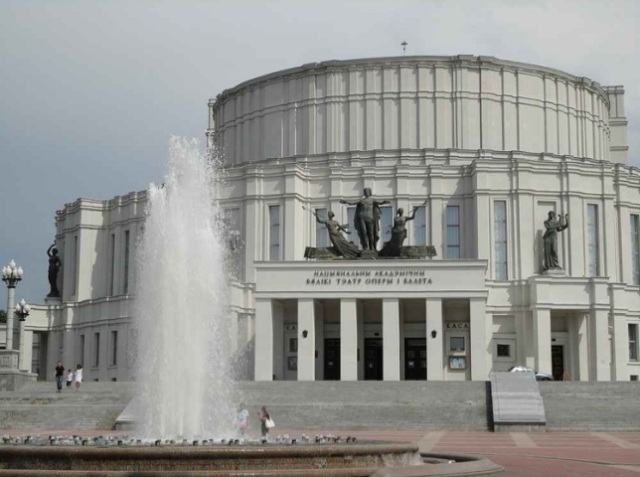Belarus is a European country that is spread over an area of around 207,600 sq km. Read on to get some fun and interesting facts about Belarus.
Facts About Belarus
Belarus is a country situated in the heart of Europe, right on the split of the Baltic Sea and Black Sea. The term Belarus literally means ‘White Russia’ and the termed is derived from the fact that the local Slavic people used to wear white clothes. It stands bordered by Poland in the west, Lithuania in the northwest, Latvia and Russia in the north, Russia in the northeast and east and Ukraine in the south. The country spreads over an area of approximately 207.6 thousand sq. km, stretching 650 km from west to east and 560 km from north to south. In Europe, Belarus is only second to Great Britain and Rumania in the terms of size. If you want to explore the country further, make use of the information provided in the following lines.

Image: Anthony Gherghetta@flickr
Fast Facts
Continent: Europe
Capital: Minsk
Area: 207,595 km2
Population: 9,776,000 (2012)
Currency: Belarusian Ruble
Official Language: Belarusian, Russian
Independence Day: 25th August
Demonym: Belarusian
Type of Government: Presidential Republic
Fun & Interesting Facts About Belarus
- The remains of Homo erectus and Neanderthal have discovered in the region. Bandkeramik cultures thrived in the region in around 6th millennia BC. Apart from this the Dnieper-Donets culture is also said to have dominated in the region. However, in the 6th century AD Slavic tribes settled in the region.
- The official name of Belarus is the ‘Republic of Belarus and the people there are called Belarusians.
- The official languages of Belarus are Belarusian and Russian. Polish and Ukranian are also spoken there.
- The Human Development Index of Belarus is the highest among the members of the Commonwealth of Independent States.
- The Constitution of Belarus does not declare an official religion, although the primary religion in the country is Russian Orthodox Christianity and Catholicism.
- The currency of Belarus is Belarusian Rouble.
- The capital of Belarus is Minsk, which is also the largest city in the country.
- Belarus follows the system of Presidential Republic.
- Belarus declared itself a sovereign state in July 1990 and gained its independence on the 25th of August 1991 after the dissolution of the Soviet Union.
- The final unification of Belarusian lands, as defined by the modern borders, took place in 1939.
- Since 1996, Belarus has been negotiating with Russia for unification into a single state, called the Union of Russia and Belarus.
- More than 80 percent of the population of Belarus comprise of native Belarusians. Apart from that, there are sizable minorities of Russians, Ukrainians and Poles as well. The country boasts a literacy rate of around 99% and only 1.5% of the population is Unemployed. However, the country
- Belarus is, at times, also called ’White Russia’.
- The highest point in Belarus is formed by Mount Dzyarzhynskaya (346 m). While, the lowest point is formed by Nyoman River (90 m). The average elevation of the country is 160 m above sea level.
- The largest lake in Belarus is Lake Naroch.
- Belovezhskaya Pushcha National Park, the remainder of primeval European forest, is a World Heritage Site.
- The oldest city of Belarus is Polotsk, which has been in existence since 862 AD.
- The oldest monument in Belarus is St Sophia's Cathedral (Polotsk), built between 1044 and 1066.
- The Belarusian Soviet Socialist Republic was one of the founders of the USSR.
- The main industries of Belarus include metal-cutting machine tools, tractors, trucks and earthmovers.
- Apart from Minsk, the other major cities of Belarus include Brest, Grodno, Gomel, Mogilev and Vitebsk.
- Majority of Belarusians reside in the urban areas surrounding Minsk and other oblast (regional) capitals.
- Since 1996, Belarus and Russia has been engaged on a talk over the merger of the two countries into a single state.
- There are 31 banks in Belarus of which 30 are owned by the government and only 1 is privately owned.
- There was a nuclear disaster in Ukraine in 1986 near the Belarusian borders. Following the disaster Belarus has been suffering high rates cancer and birth abnormalities and about a quarter of its land has been declared uninhabitable.
- Agriculture and manufacturing industries are the backbones of Belarusian economy.
See also
- Africa | Asia | Australia | Austria | France | Germany | Greece | Hill Stations | Honeymoon Destinations | Worldwide Holidays
More from iloveindia.com
- Home Remedies | Ayurveda | Vastu | Yoga | Feng Shui | Tattoos | Fitness | Garden | Nutrition | Parenting | Bikes | Cars | Baby Care | Indian Weddings | Festivals | Party ideas | Horoscope 2015 | Pets | Finance | Figures of Speech | Hotels in India : Delhi | Hyderabad | Chennai | Mumbai | Kolkata | Bangalore | Ahmedabad | Jaipur
- Contact Us Careers Disclaimer Privacy Policy Advertise With Us Lifestyle Sitemap Copyright iloveindia.com. All Rights Reserved.







